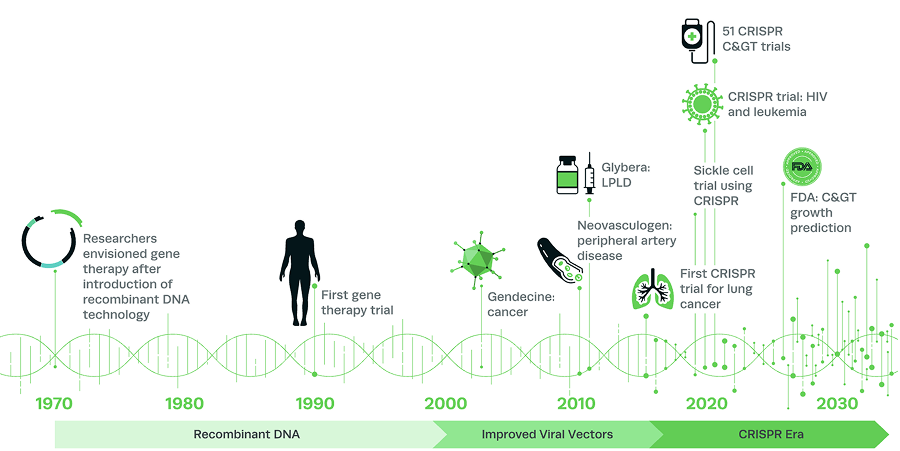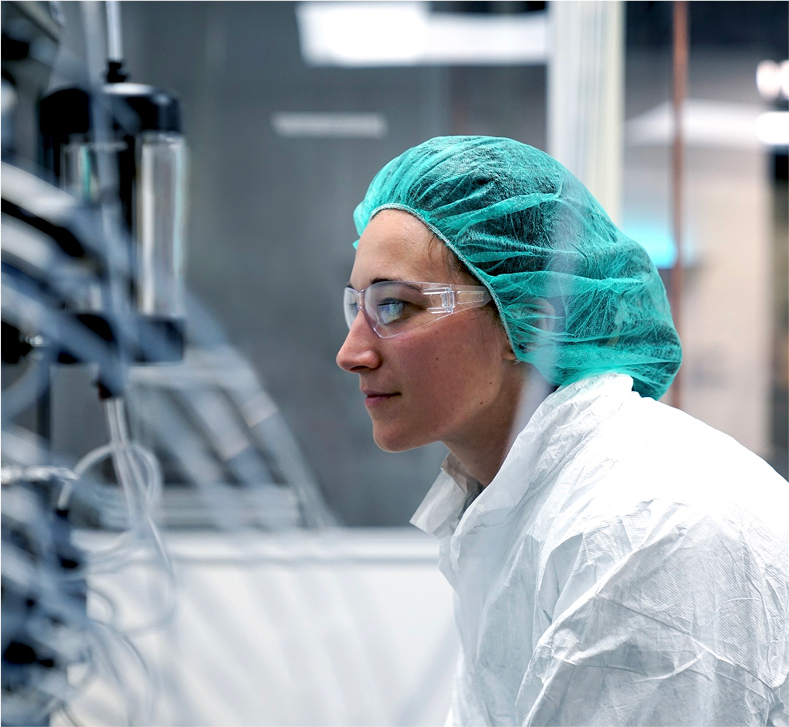The Early Days of Gene Therapy
When the idea of gene therapy was first proposed, it seemed like science fiction - even to medical professionals and researchers. Let’s explore the emergence of gene therapy, its promise, and early setbacks.
A major setback
After some initial success, a major setback to the gene therapy field came in 1999. Jessie Gelsinger, a young man suffering from ornithine transcarbamylase deficiency syndrome (OTCD), a rare metabolic disorder, died from complications arising from his experimental treatment. This was likely the result of poor liver function, which is now commonly used as an exclusion criterion for gene therapy trials, or a severe immune reaction to the high dose of adenovirus used to deliver the gene.

Our research on translational molecular medicine and molecular oncology requires the highest efficiency and consistency of experiments. With the use of synthetic sgRNA for cancer genome editing, I am convinced that the results will be significantly superior to other methods.
Success in Gene Replacement Therapy and Gene Editing
Researchers didn’t entirely give up on the idea of gene therapy after those early setbacks. They kept chipping away at it, and they made some key breakthroughs in the next two decades.
Gene therapy makes a comeback
Over a decade after Jessie Gelsinger’s death, with the development of better vectors for gene delivery, the field began to see renewed interest and excitement. In 2003, modified lentiviruses were used to deliver gene replacement therapies for the first time, and the first commercially available gene therapy, Gendicine, was released in China to treat cancer.
The CRISPR Revolution
The development of CRISPR-Cas9 as an easily customizable gene-editing tool in 2012 was groundbreaking for gene therapy researchers. CRISPR can fix the root cause of genetic conditions, potentially curing disease with a single treatment. Compared to previous gene-editing methods, CRISPR-Cas9 is also much simpler to perform, more precise and efficient at editing, and more cost-effective.
The simplicity of the CRISPR-Cas system and its easily programmable guides means that researchers can easily adapt it to any of the thousands of potential disease targets. It has predictable and consistent outcomes, with precise editing and low off-target activity compared to previous technologies, offering rapid translation from the bench to the clinic and higher levels of safety for patients.
Synthego's CRISPR Nucleases
With a successful track record in synthesizing and optimizing gRNAs, Synthego is dedicated to equipping you with high-performance nucleases precisely paired with engineered gRNAs to meet your most challenging CRISPR objectives.

The progress in cell and gene therapies since the discovery of CRISPR has been rapid. The first trial of an ex vivo CRISPR T cell therapy for non-small-cell lung cancer (NSCLC) began in 2016, a mere four years after CRISPR was invented. In 2018, a CRISPR cell therapy trial for sickle cell disease (SCD) began, editing the cells of SCD patients to restore production of fetal hemoglobin. The first in vivo CRISPR gene therapy trials began in 2019, treating a patient with Leber’s congenital amaurosis (LCA) by correcting a mutation in the CEP290 gene.
CRISPR has enabled immune cells, such as T cells, to be genetically modified so that they become much more efficient at fighting cancer and other diseases. Examples of gene-edited cell therapies include chimeric antigen receptor (CAR) T cell therapy, modified T cell receptor (TCR) cell therapy, natural killer (NK) cell therapy, and tumor-infiltrating lymphocyte (TIL) cell therapy.
Scientists are also working to develop CRISPR gene therapies and gene-edited cell therapies for a wide range of monogenic diseases, including blood disorders, neurodegenerative disorders, hereditary blindness, and immune disorders. For more information on these possibilities, you can read our blog exploring diseases CRISPR can potentially cure and the latest in CRISPR clinical trials. CRISPR gene therapies are not limited to DNA editing for the treatment of genetic diseases and cancer - they are also currently being developed for infectious diseases, such as HIV.
